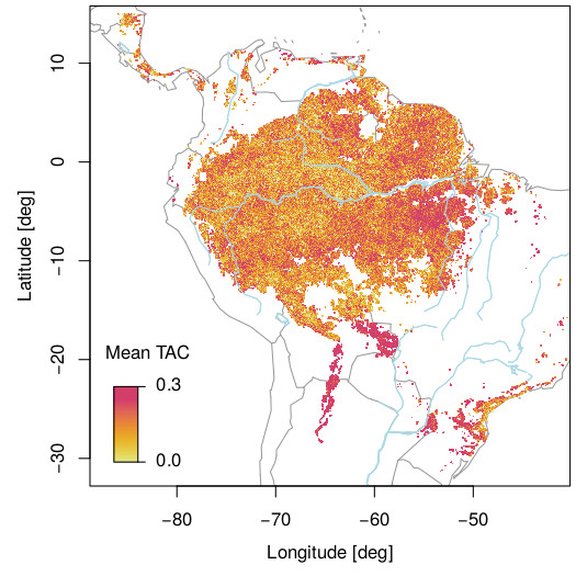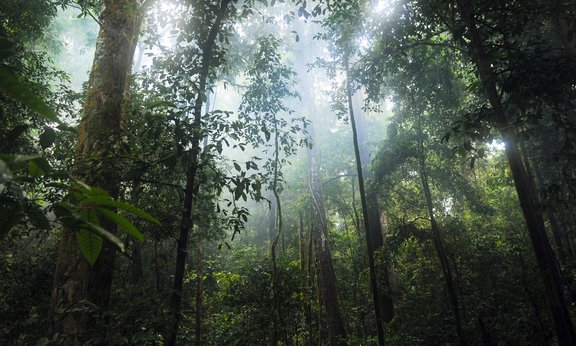Medical science has known for a long time: Diseases that are usually harmless may become problematic for the body when the immune system is weakened. Does this also hold true for forests, in particular tropical rainforests? Is there a threshold where the smallest ecological imbalances could be enough to cause irreversible damages? These are the topics statisticians Achim Zeileis and Nikolaus Umlauf, together with biologists and remote-sensing experts from the Netherlands and Brazil, investigated. Their results have recently been published in the renowned journal Nature Climate Change. “By using satellite images we are able to show that tipping points also exist for tropical rainforests, where they are in such a weakened state that the smallest perturbations may cause sustained forest damage or even die-off. We developed a method to automatically detect regions that are less resilient,” says Umlauf.
Satellite images
To calculate the vegetation density, the scientists used the Normalized Differenced Vegetation Index (NDVI) - a standard satellite-image-based measurement to determine forest density on Earth, which has been used for decades. “It is normal that tropical rainforests change during the course of a year; and while there are no conventional seasons, periods of drought and high rainfall do affect vegetation,” says Zeileis. Healthy forests recover quickly, which is also visible in time series of satellite images.
The phenomenon called critical slowing down has been well-known in other disciplines for some time. It describes a potential tipping point where the smallest perturbations in the system may cause permanent changes. “A descriptive analogy would be a patient with a weakened immune system: A virus that wouldn’t pose a threat in a healthy body could lead to death in this weakened state,” explains Umlauf. Slowing down measures the recovery time of the organism back to its initial equilibrium state. This can also be applied to forests: How long does it take for forests to recover from a period of drought? Comparing satellite images allows for precise conclusions.
Autocorrelation

The statisticians are particularly interested in the so-called autocorrelation: How correlated are the satellite images of the same rainforest areas over subsequent moments in time? Fewer changes in the images mean an increase in temporal autocorrelation, which translates into a longer recovery time for the forests. “This is how we can identify endangered areas that need to be studied in more detail to prevent the forests from dying off,” says Zeileis. The calculations are by no means trivial: The statisticians analyzed and compared satellite images of tropical rainforests in Africa and South America between the years 2000 and 2012. To obtain relevant and robust data, the mathematical models need to be able to filter out factors that could distort the images, for example cloudiness, and take into account regular seasonal fluctuations. Another challenge was the sheer amount of data that needed to be processed.
The statisticians in Innsbruck developed a model that allows for automated calculations – a big step forward for research: “In other words, our models tell scientists if, and which, forest areas are endangered after feeding the model with the satellite data of the forests,” explains Umlauf. This enables biologists to study the identified forest areas more closely in the field.

